Ferris-Wright Park & Earthworks
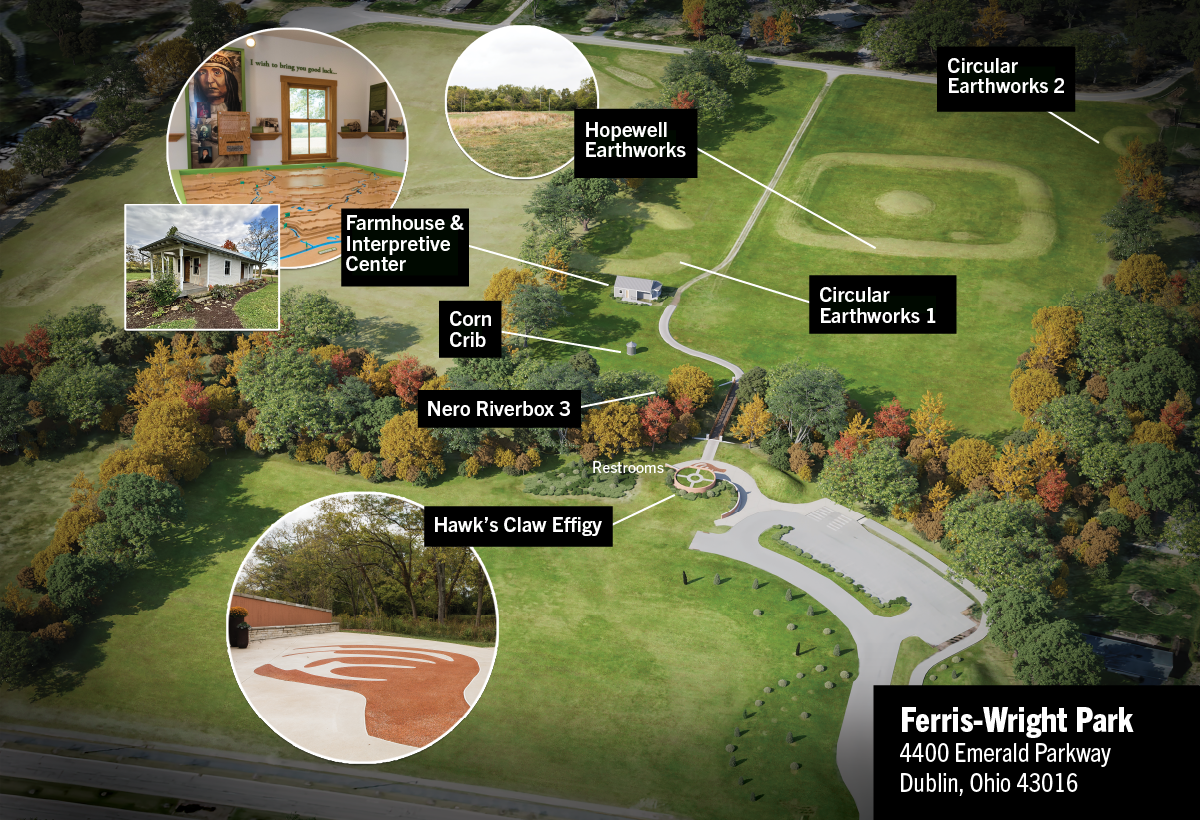
Guided Tours of Ferris-Wright Park & Earthworks
4400 Emerald Parkway, Dublin
Thousands of years ago, people gathered where Ferris-Wright Park now stands for celebrations, ceremonies, and projects.
Today, trained volunteers host open houses at the interpretive center, sharing the land’s rich history. Dublin Heritage Interpreters offer free guided tours of this historic park, featuring ancient earthworks and what is believed to be the area’s first framed house. Visitors may try ancient tools and technology, explore the garden, and learn about the Hopewell Culture, Wyandot/Wyandotte Nation, and early farmers of Dublin.
2025 Open House Dates
Dublin Heritage Interpreters provide guided tours through the year.
- Saturday, June 21 | 10 a.m. to noon
- Sunday, June 22 | 1 to 3 p.m.
- Saturday, June 28 | 10 a.m. to noon
- Sunday, June 29 | 1 to 3 p.m.
- Saturday, July 19 | 10 a.m. to noon
- Sunday, July 20 | 1 to 3 p.m.
- Sunday, July 27 | 1 to 3 p.m.
- Saturday, Aug. 9 | 10 a.m. to noon
- Sunday, Sept. 14 | 1 to 3 p.m.
- Sunday, Oct. 12 | 1 to 3 p.m.
- Sunday, Nov. 2 | 1 to 3 p.m.
Volunteer at the Ferris-Wright Interpretive Garden
Ferris-Wright Gardeners maintain the interpretive gardens that communicate 2,000 years of agricultural history in the Ohio valley. Volunteers plant, mulch, water, weed, harvest and bring produce donations to the Dublin Food Pantry. Volunteers interested in gardening or the Heritage Interpreter program should contact Sarah Esala at sesala@dublin.oh.us.
New in 2025: Tours at Thaddeus Kosciuszko Park
4444 Hard Road, Dublin
Explore the natural beauty of nearly 40 acres of woodlands at Thaddeus Kosciuszko Park with guided tours by Dublin Heritage Interpreters. Discover unique features like a sinkhole and a cactus garden while learning about the park’s ties to a Revolutionary War general and its evolution into a City park.
Tours begin at the gazebo. Please note there are no park restrooms.
- Saturday, June 15 | 10 a.m. | 10:45 a.m. | 11:30 a.m.
- Saturday, July 12 | 10 a.m. | 10:45 a.m. | 11:30 a.m.
- Sunday, Aug. 17 | 1 p.m. | 1:45 p.m. | 2:30 p.m.
- Saturday, Sept. 13 | 10 a.m. | 10:45 a.m. | 11:30 a.m.
- Saturday, Oct. 11 | 10 a.m. | 10:45 a.m. | 11:30 a.m.
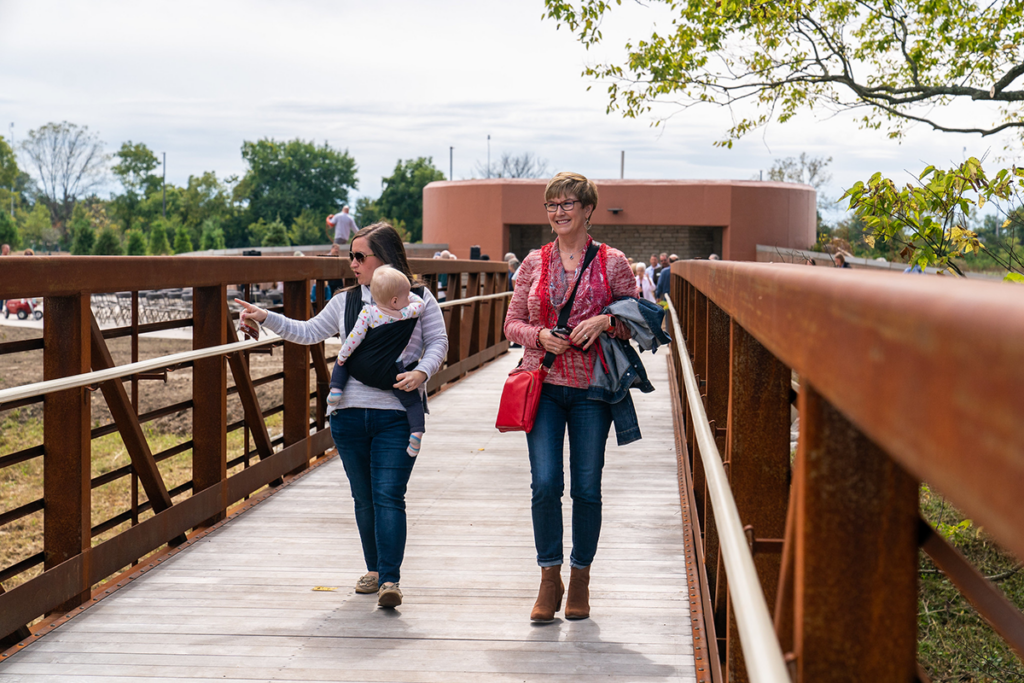
Thank you!”
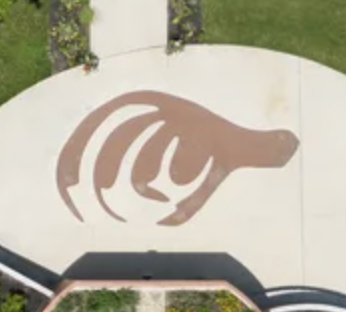
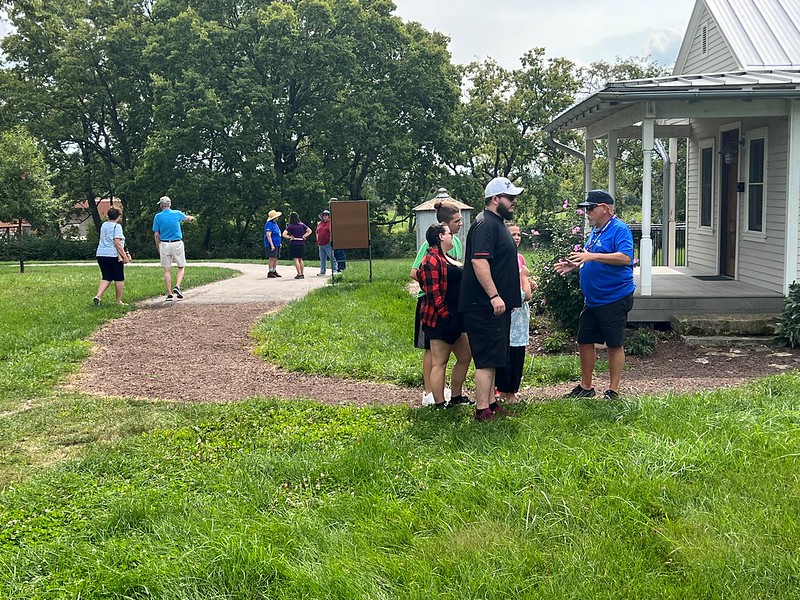

About Ferris-Wright Park
Located at the northeast corner of Emerald Parkway and Riverside Drive, Ferris-Wright Park (4400 Emerald Parkway) preserves and showcases ancient earthworks, an 1800s farmhouse and natural features that are significant parts of Dublin’s history. The land surrounding the park has been home to many over the years, from indigenous peoples thousands of years ago to some of Dublin’s first settlers.
Ferris-Wright Park contains three earthworks (two circles and a square) that were constructed by the Hopewell culture. The park is also home to the Interpretive Center located inside the historic Ferris family farmhouse. The center honors the past through interactive stations that tell the stories of the park’s inhabitants throughout the years.
The Hopewell Culture
The indigenous peoples of the Hopewell era were known for building earthworks — precise geometric shapes that hold meaning and purpose — in the Ohio Valley. The name Hopewell comes from the family on whose land these earthworks were first noticed in Ross County, Ohio, in the 1800s.
The Hopewell culture lived, hunted, fished and farmed in what is now Ohio and other parts of eastern North America around 100 BCE to 400 AD. They were an advanced egalitarian society with an interaction sphere that imported exotic materials from places such as the Great Lakes, the Gulf of Mexico and the Rocky Mountains, often using these materials to create intricate art and ceremonial pieces. This distinguishes the Hopewell culture from most of its contemporary societies worldwide based on its many accomplishments in architecture, art, math and astronomy.
Their sophisticated understanding of geometry and astronomy is demonstrated in their ceremonial earthworks, which were places for marriage ceremonies, honoring relatives and neighbors who died, making alliances, celebrating, feasting and hosting sacred games. Today, few of these ceremony spaces remain intact. Many have been damaged or cleared away for farming and development.
The three earthworks at Ferris-Wright Park are the northernmost earthworks in the Scioto Valley. The tallest mound once stood 5 feet tall and the others were approximately 3 feet. After the Hopewell era, culture and society in the Scioto Valley underwent dramatic periods of change that led to the development of modern Native American tribes. The Wyandot had an active presence in the area. Today, the Wyandotte Nation continues to offer guidance and support in interpreting the park’s indigenous history.
Archaeological Discoveries
The earthworks in Ferris-Wright Park were explored by local farmers and villagers for many years before being professionally excavated in 1890, 1922 and 1961. The artifacts retrieved during these digs helped archeologists better understand the peoples of the Hopewell culture.
The Ohio State University Department of Anthropology led archeological digs at the site in 2013, 2014 and 2016, discovering artifacts such as prehistoric stone tools and historic pottery. They also uncovered modern debris dating from a few years ago to their oldest find — a Clovis point, which is a type of North American prehistoric tool — dating to around 13,000 years ago.
Ohio Valley Archaeology also led geophysical surveys in and around the site, creating a clearer picture of the earthworks.
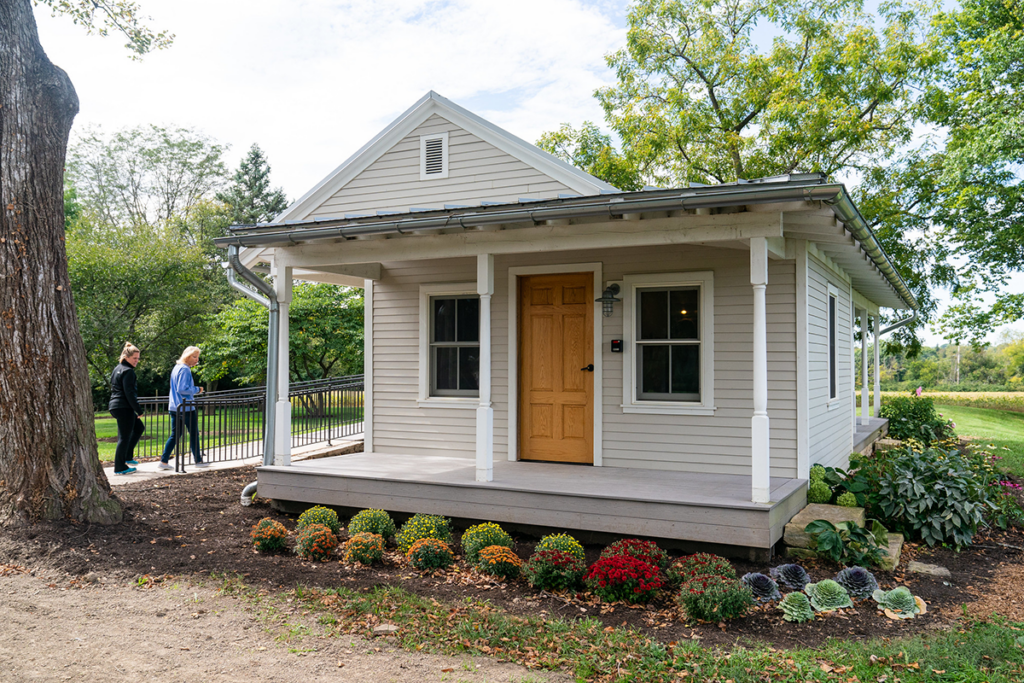

Ferris Farmhouse
Early settlers explored the Ohio region in the 1800s, drawn by abundant natural resources like rich soil, water and game.
The first farmers in the Dublin area tilled and plowed the land with horse-drawn iron equipment. Wheat, hay and perhaps alfalfa were among the first crops to be planted, but corn, potatoes, beans and other vegetables provided annual sustenance for the families.
Wright Run Creek, which runs through Ferris-Wright Park, irrigated early farms. Waterways, like the nearby Scioto River, were used for milling and other industries that brought prosperity to Dublin.
Joseph Ferris came to Ohio in 1818, eight years after Dublin was platted as a village. Ferris cleared the land for farming and built his farmhouse in 1820. It is said that his house was the first frame house in the area. Others were log houses or log cabins. Josephine Holder Wright, the last resident of the house, lived in the home for most of her 96 years. It was her wish that this park be persevered for future generations to understand the many people that have lived on this land.
Today, visitors may explore the restored home during open house hours and discover exhibits about the park’s history.
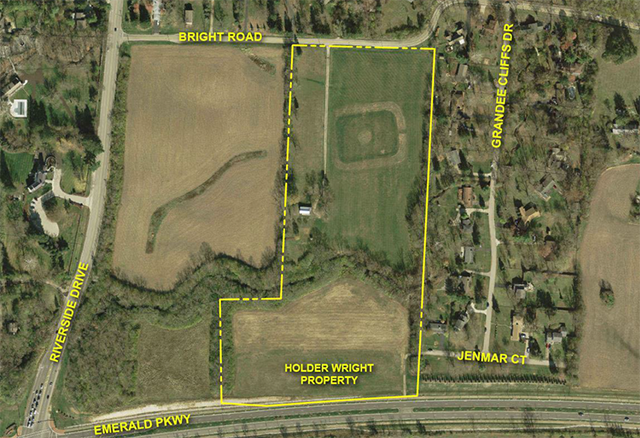
DCRC Regular Building Hours
- Monday – Friday: 5:30 a.m. – 9:30 p.m.
- Saturday: 8 a.m. – 8 p.m.
- Sunday: 8 a.m. – 8 p.m.
2025 Modified Hours
- New Year’s Eve: Tuesday, Dec. 31 open from 5:30 a.m. to 4 p.m.
- New Year’s Day: Wednesday, Jan. 1 open from 8 a.m. to noon
- Easter: Sunday, April 20 – CLOSED
- Memorial Day: Monday, May 26 open from 8 a.m. to noon
- Independence Day: Friday, July 4 open from 8 a.m. to noon
- Labor Day: Monday, Sept. 1 – CLOSED
- Thanksgiving: Thursday, Nov. 27 open from 8 a.m. to noon
- Christmas Eve: Wednesday, Dec. 24 open from 5:30 a.m. to 4 p.m.
- Christmas: Thursday, Dec. 25 – CLOSED
- New Year’s Eve: Wednesday, Dec. 31 open from 5:30 a.m. to 4 p.m.
- New Year’s Day: Thursday, Jan. 1, 2026 open from 8 a.m. to noon
2025 Dublin Irish Festival Special Hours
- Friday, Aug. 1 open from 5:30 a.m. to 2 p.m.
- Saturday, Aug. 2 open from 7 a.m. to 10 a.m.
- Sunday, Aug. 3 – CLOSED
2025 Annual Cleaning, Maintenance & Repairs
The Dublin Community Recreation Center (DCRC) will be closed from Saturday, Aug. 23 through Monday, Sept. 1, 2025 for annual cleaning, maintenance and repairs. The DCRC will reopen at 5:30 a.m. Tuesday, Sept. 2. Offices will be staffed for phone calls from 8 a.m. – 5 p.m. Monday through Friday. For additional closings and construction updates visit our website.

Bocce Ball Courts
Two regulation bocce ball courts are available for public use, subject to senior adult programming and league play. Bocce ball sets may be checked out at the Welcome Desk by players 18 and older.
Classrooms
The classrooms house a variety of programs, including pottery and arts & crafts—meeting the needs of preschoolers, children, teens, adults and senior adults.
Community Hall
The Community Hall provides space for parties, receptions, meetings and community events. The facility seats up to 300 or can be divided into smaller rooms.
Abbey theater of Dublin
A 200-seat theater can be used for musical, theatrical and dance performances; film/video; lectures; and seminars.
Computer Lab
Equipped with workstations and a variety of software programs, the computer lab provides high-speed Internet access and opportunities for beginning and intermediate instruction. Open to ages 18 & up.
Family Locker Rooms
Each family locker room has its own shower, restroom and lockers. One locker room, designed for people with special needs, features a dressing table.
Fitness Area
Looking for free weights and cardiovascular equipment? Check out the fully equipped fitness area on the first floor. You will find treadmills, elliptical machines, bicycles and stair steppers along with free weights, Nautilus and a complete set of Cybex strength equipment.
Group Fitness Studios
If you enjoy group fitness, check out the myriad of classes offered. Two state-of-the-art studios feature suspended floors to help reduce impact and injury. Several pass options are available, allowing participants to choose from a weekly schedule of classes that include Spinning®, Pilates and TRX.
Jogging/Walking Track
Joggers and walkers on the second floor track can cover a mile in 13 laps. An expanse of windows provides views of the pools and the outdoors.
Multi-Purpose Pool
The competitive/lap pool measures 25 yards by 25 meters and has two one-meter diving boards. This pool often is divided for activities such as aqua aerobics, open swim, swim team practice and instruction. Bleachers provide ample seating and a separate entrance makes it perfect for area swim meets. The natatorium walls in both the lap and leisure pools are lined with sound-absorbing material.
Leisure Pool
A unique feature of the DCRC is the leisure pool, which includes a lazy river, clam slide for children, double helix slide for those a little more daring and a zero-foot entry point for cautious tots. The warmer water and 3.5-foot maximum depth make this pool perfect for children, adults and senior adults.
Senior Adult Lounge
An elegant, cozy lounge welcomes senior adults to our center. Enjoy playing cards with friends, reading by a fireplace or simply relaxing in this peaceful environment.
Teen Lounge
A teen lounge offers space and a variety of programming opportunities for Dublin teens.
Wee folk/Youth Lounge
While moms and dads are working out, attending a class or relaxing in the hot tub, they can rest assured that their children—from ages 6 weeks to 12 years—are nearby and safe. Children can play in the indoor or outdoor area or engage in age-appropriate games and activities.
Courtesy & Rules
Hours of Operation
Our parks are open for your enjoyment from dawn to dusk, unless otherwise noted at the park or during certain special events.
Shelters/Pavilions
A number of our shelters and pavilions are available to reserve on a first-come, first serve basis. Please be courteous of your neighbors and abide by your reservation times.
Keep it Clean
We’re sure you’ll find Dublin’s parks and bikeways to be clean, beautiful places to enjoy with your family. The City strives to keep its parks, playgrounds and bikeways clean and free of litter. Please leave the parks as clean as you find them so that others will enjoy them as much as you do. Disposal of litter in public places is prohibited unless placed in public trash containers or using City-authorized containers as part of the City’s refuse, recycling and yard waste collection programs.
Pets
We know your furry friends enjoy nature as much as you do. We ask you to be safe and courteous with your pets.
Animals may not run at-large in our parks. All animals must be under the owner’s control at all times. All pets must be securely leashed, kept in a vehicle or suitably caged.
Animal owners also must pick up and properly dispose of any fecal matter left by their pets. It’s not just courteous — it’s the law!
Horses
Horses are allowed in designated areas of Glacier Ridge Metro Park.
Hunting and Fishing
For the safety of our residents, hunting is forbidden in the City. Fishing is permitted in designated areas, including certain City park ponds and in the Scioto River (with a license). Please fish only in ponds where signs prohibiting fishing are not posted.
Respect our Parks
Plants and animals also are part of the Dublin community. Please respect the plant and animal life and ecosystems of our natural areas. Enjoy the flowers, trees and other flora without picking or damaging plants. Touching or disturbing wildlife, including animal and bird nesting areas and eggs can be dangerous to humans — not to mention our flora and fauna! And please do not damage or remove any property or natural feature, including stones and minerals, earth, wood, and nuts. Take only pictures and leave only footprints in our parks.
Rules & Regulations
Dublin Recreation Services is committed to providing quality recreation programs and facilities for the Dublin community. Use of the facilities by families and citizens is strongly encouraged. The following policies have been established to operate the DCRC and to ensure our patrons quality and safe recreation experiences:
- Proper and valid identification is required to gain access to the DCRC. Users of the DCRC need to check in at the front desk and provide annual pass, resident card, temporary pass or pay the daily pass rate for admittance.
- Annual pass holders who do not present their annual pass will only be admitted if an alternate form of photo identification is produced.
- Resident card holders must present their Dublin Resident ID card each visit to receive the daily pass discount rate.
- Annual passes are not transferable and will be deemed void when in the hands of those other than the proper registrant.
- The DCRC and its grounds are smoke- and alcohol-free environments by City ordinance.
- Eating and drinking is permitted in designated areas only.
- Children ages 9 and under must have adult/guardian at least 16 years of age supervising at all times. Supervising adults must keep children ages 4 and under within arm’s reach; there must be at least one adult for each two children in this age group. Children ages 5 through 7 must be within sight of their attending adult at all times. Children ages 8 and 9 must have an adult in the facility at all times. For children ages 5 through 9, there must be one adult for every five children. Children ages 10 years and over may enter the facility without an adult supervisor.
- Youth must be 16 years of age or older to be on the fitness floor. Youth ages 12 – 15 years are permitted on the fitness floor if directly supervised by an adult or if they have passed the Junior Fitness Card Program (see Fitness Program Section). Youth under the age of 12 years are not permitted on the fitness floor area at anytime.
- Youth must be 13 years of age or older to be on the track or in the track stretching areas. Youth ages 8 – 12 years are permitted on the track if directly supervised by an adult or if they have passed the Junior Track Program (see Fitness Program Section). Youth may enroll in the Junior Track Program if they are ages 10-12. Youth under the age of 8 years are not permitted on the track at anytime unless utilizing the pool observation area with an adult.
- Changes in recreation schedules may occur without notice. Staff will post changes in the schedule with as much advance notice as possible. Current pool, aerobics and open gym schedules are available at the Front Desk.
- Dublin Recreation Services is not responsible for lost or stolen articles. It is strongly recommended that you lock your possessions in a locker during your visit to the DCRC.
- Lockers are available on a first-come, first-served basis. Locks may not be left on lockers overnight. Locks which are left overnight will be removed by staff.
- All participants must observe the rules and regulations relating to the safety and operation of the facilities. Any passholder who fails to comply with the rules and regulations of the DCRC will be subject to the following penalties:
- One week’s suspension from use of the facilities upon the first incident;
- Thirty days suspension from use of the facilities upon the second incident;
- One year suspension from use of the facilities upon a third violation; and
- Permanent suspension from use of the facilities upon any subsequent incident.
The following activities, although not an exhaustive list, are examples of behaviors that will result in disciplinary action and police reports when applicable:
- Fighting
- Stealing
- Property Damage
- Disorderly conduct
- Criminal damage
- Verbal abuse of staff and/or patrons
- Not following posted policies and rules
Parks & Recreation
Recreation Services
614.410.4550
Parks, Shelter Houses & Kaltenbach Rentals
614.410.4510
24-Hour Information Hotline:
614.410.4946
Dublin Community Recreation Center Rentals
614.410.4550
Report an Issue
Request a service or report an Issue.
Tell Dublin
Send us your public input.
Dublin, Ohio, USA
5555 Perimeter Drive
Dublin, Ohio, 43017
Mon – Fri: 8 a.m. – 5 p.m.
